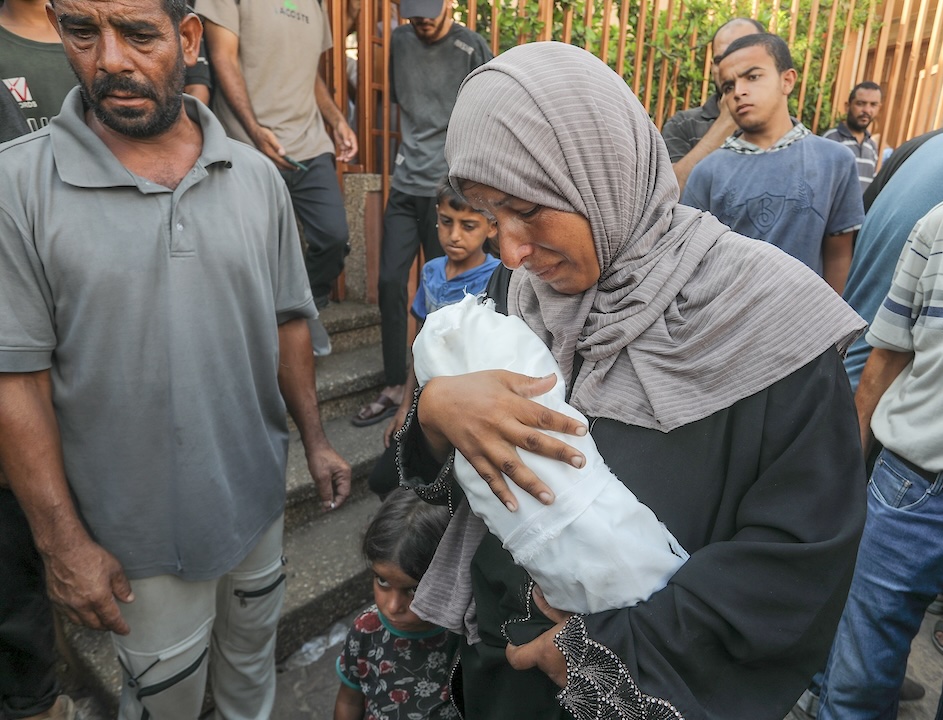
Editor’s note: This article originally appeared at Common Dreams and is republished here under Creative Commons license CC BY-NC-ND 3.0. You can see the original article here.
The world’s top authority on hunger crises officially declared Aug. 22 that a famine of the most severe kind is the reality in Gaza—a humanitarian disaster engineered by Israel’s relentless blockade of food aid and other life-saving supplies amid a military campaign that makes little to no distinction between civilians and possible Palestinian fighters living in the occupied enclave.
The Integrated Food Security Phase Classification (IPC)—the multi-stakeholder global initiative which integrates international, regional, and national governments and agencies to monitor and respond to food-related emergencies—issued a “special snapshot” on the situation in Gaza and determined that “Famine (IPC Phase 5)—with reasonable evidence—is confirmed in Gaza Governorate.”
Phase 5 is the highest level of its famine emergency categories, which, according to the IPC, which means the situation is beyond Category 4 (“Emergency”) and now represents a “Catastrophe.”
(Image: The Integrated Food Security Phase Classification)
According to the IPC’s snapshot assessment:
“After 22 months of relentless conflict, over half a million people in the Gaza Strip are facing catastrophic conditions characterised by starvation, destitution and death. Another 1.07 million people (54 percent) are in Emergency (IPC Phase 4), and 396,000 people (20 percent) are in Crisis (IPC Phase 3).
“Between mid-August and the end of September 2025, conditions are expected to further worsen with Famine projected to expand to Deir al-Balah and Khan Younis. Nearly a third of the population (641,000 people) are expected to face catastrophic conditions (IPC Phase 5), while those in Emergency (IPC Phase 4) will likely rise to 1.14 million (58 percent). Acute malnutrition is projected to continue worsening rapidly.
“Through June 2026, at least 132,000 children under five are expected to suffer from acute malnutrition—double the IPC estimates from May 2025. This includes over 41,000 severe cases of children at heightened risk of death. Nearly 55,500 malnourished pregnant and breastfeeding women will also require urgent nutrition response.
“Despite limited data, conditions in North Gaza Governorate are estimated to be as severe—or worse—than in Gaza Governorate.”
Download the complete four-page assessment released Aug. 22. The agency said a more complete assessment of its findings will be put out in the coming weeks.
Humanitarians, human rights groups, and relief organizations, which for months have desperately warned world leaders that starvation and malnutrition were rapidly spreading, reacted to the IPC designation—given the global community’s failure to force Israel into compliance with international law—with a mix of fury and frustration.
“Despite warnings in July that famine was imminent, Israel has continued to deprive Palestinians of food, denying almost every request from long-established humanitarian agencies, preventing them from delivering vital food and aid that could have stemmed hunger, malnutrition, and disease,” said Helen Stawski, the policy lead for Oxfam International.
(Image: IPC assessment)
Stawski placed the blame squarely on Israel’s government for blocking food and other supplies that could otherwise be saving lives.
“Oxfam alone has more than $2.5 million worth of life-saving aid, including high-calorie food packages—now sitting in warehouses outside Gaza,” she said. “Israeli authorities have rejected it all, at a time when it is needed more than ever.”
Inger Ashing, CEO of Save the Children International, rebuked the inaction of global actors who stood by while Israel and its allies allowed to the famine to take hold.
“The world has been watching as children have suffered the unthinkable for nearly two years in Gaza, and now, we have confirmation that hundreds of thousands are being slowly starved to death. None of us should accept this,” said Ashing.


